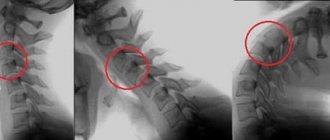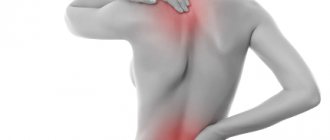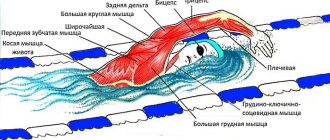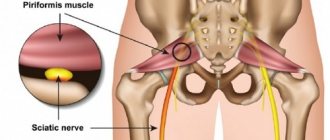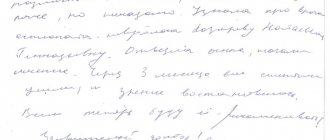September 24, 2019
87998
2
3.7 out of 5
Spinal block is an injection of an anesthetic into strictly defined points located along the spinal column. Often it is not a method of treating an existing disease and does not have any therapeutic effect, but it can quickly relieve the pain it causes. Although there are therapeutic blockades that involve the administration of corticosteroids.
The procedure is performed exclusively in neurosurgical or traumatology medical institutions by qualified medical personnel. No nurse or doctor who has not undergone special training has the right to perform a spinal block, as this is fraught with serious complications and loss of the ability to move.
With “SL Clinic” you no longer need to look for where to perform a back block. By contacting us, you won’t have to wait long in line to relieve a severe attack of pain. Highly qualified specialists of “SL Clinic” will immediately perform all the necessary manipulations with strict adherence to all the subtleties of the blockade injection technique. The price of a spinal block is indicated in the price list and remains consistently affordable for a wide range of people.
Mechanism of action
When pathological changes occur in the spine, the spinal nerves are pinched, which provokes severe pain. Depending on which nerve is pinched, the pain can radiate to the neck, shoulders, buttocks, hips, etc. If it becomes unbearable, the only way to help the person is to perform a blockade.
Due to the targeted administration of the anesthetic, the conduction of impulses along the nerve fibers is temporarily blocked. This leads to the elimination or at least a significant reduction in pain intensity within a couple of minutes. Therefore, the patient can almost immediately return to abandoned activities and move fully.
If the manipulation is performed correctly, there are no negative consequences, which allows you to repeat it as many times as required. An additional advantage is the presence in the injected solution, in addition to the anesthetic, of anti-inflammatory substances. They contribute to the rapid elimination of the inflammatory process in the affected segment of the spine and increase the effectiveness of conservative therapy.
The procedure is carried out exclusively under completely sterile conditions (usually in an operating room or dressing room). This is extremely important, since when viruses or bacteria penetrate the spinal cord, life-threatening complications can develop: meningitis, encephalitis, myelitis.
In the first few days after the manipulation, there may be undesirable consequences in the form of numbness of a part of the body. This does not require correction and goes away on its own in a few days.
Manipulation technique
The patient stops eating three hours before the procedure (the snack should be light). If the patient is being treated on an outpatient basis, it is better not to come by car, as coordination may be impaired after the administration of the anesthetic. The patient is placed on his stomach, the puncture site is exposed (neck area).
A hard pillow or cushion is placed under the head end. The doctor examines the skin and palpates to identify lumps and other formations. If no changes are found, the skin is disinfected with an antiseptic.
The manipulation is carried out in compliance with all the rules of asepsis and antisepsis.
The required amount of substance is drawn into the syringe, the rest of the volume is filled with saline solution. Next, the injection site is processed again, after which the needle is inserted with a gentle movement. A cotton ball moistened with alcohol is applied to the puncture site. The patient should lie down for another five minutes, then be observed by a doctor for half an hour. According to patients, the analgesic effect occurs almost immediately.
Indications
Medical research proves that any acute pain in the back, especially the lower back and sacrum, should be quickly relieved. Otherwise, they can provoke the development of psychological disorders, which will worsen the effectiveness of the treatment.
Also, with a long course of the disease, a persistent focus of excitation can form in the cerebral cortex. Any additional irritation can cause its activation and the development of a new attack. In such situations, it is very difficult to improve the patient's condition using conservative methods. Therefore, it is much better to prevent the formation of a focus of excitation in the cerebral cortex. If conventional means do not help eliminate pain, a spinal block is used.
The method is intended to relieve pain caused by:
- intervertebral hernias;
- protrusion of intervertebral discs;
- myositis;
- radiculitis;
- neuritis;
- ankylosing spondylitis;
- osteochondrosis;
- spondyloarthrosis;
- intercostal neuralgia;
- trigeminal neuralgia;
- neuralgia of the spinal nerves.
It is worth giving a blockade injection no more than 4 times a year. Although in certain cases, patients are prescribed a course of such injections, consisting of 10 or more procedures. Between them there is a break of 2-3 days.
The method is also often used to diagnose a number of diseases. The effectiveness of the blockade for pain indicates the neurological causes of its occurrence. Otherwise, you should look for another source of pain.
Reviews
Ekaterina: They did a blockade of a vertebral hernia. The doctor initially examined me and talked about the procedure itself. Several side effects occurred after the procedure. My leg was numb and all my movements were a little uncoordinated, but the doctor warned me about such phenomena. Two days passed after the injection and only on the third day did the leg go away. Overall, I am pleased with the result and have already made an appointment for the next appointment.
Tatyana: They made a blockade of the lower back. Injected with Lidocaine and Diprospan. The doctor talked about the procedure and possible complications after it. After some thought, she finally agreed. I work in a shopping center, so I'm on my feet all the time. After the procedure, my condition improved significantly, although there were some side effects.
Kirill: Initially, I endured the pain for a very long time. But after going to the doctor, I was advised to do a spinal block. I became interested in what it is and whether it is possible to do a spinal block at home. I read about it and decided to do it in the hospital. Everything went quickly and relatively painlessly, after which the aching pain stopped and I was able to move normally. The effect was observed for more than 4–5 months. The first day it was a little difficult to move, but this was only temporary.
Kinds
There are quite a few types of blockades. Depending on the nature of the observed clinical picture, drug solutions can be injected into soft tissues, certain biologically active points, tendons, and into the area of passage of nerve fibers or their plexuses. They can be performed on any part of the back, but only a doctor can choose the right type of pain relief. For example, targeted injections into the area of the C1-C7 vertebrae of the cervical spine can eliminate pain in the entire back.
- Cervical. The drug is injected into the vertebrae of the cervical spine. It makes it possible to completely eliminate pain in the neck, arms and head, as well as throughout the entire spine.
- Chest. It involves injection of a drug solution at the level of the thoracic spine, which helps to numb the arms, chest and torso muscles, as well as internal organs.
- Thoraco-lumbar. Helps eliminate pain in the lower back, legs and eliminates discomfort in the intestines.
- Lumbar – relieves pain in the lumbar region. Can be prescribed by a neurologist or vertebrologist for diagnostic purposes.
- Coccygeal - designed to eliminate pain in the lumbosacral spine.
There are medicinal, lidocaine and novocaine blockades. The first involves the introduction, in addition to anesthetics, of additional solutions of corticosteroids that have pronounced anti-inflammatory properties. They are considered a fairly effective method of treating pain and other manifestations of neurological disorders, since they also affect the causes of pain - the inflammatory process.
Therapeutic blockades provide a low risk of developing undesirable effects from the administered drugs, since their active substances immediately penetrate the lesion and only then are absorbed in small doses into the general bloodstream.
Novocaine and lidocaine blockades involve injecting an anesthetic into the area of maximum pain, the so-called trigger points. They are effective for pain that occurs when the tone of the back muscles increases, joint congestion, and radicular syndrome. At the same time, lidocaine blockades can only be used to relieve pain, while novocaine blockades are also prescribed for diagnostic purposes.
There are also different methods of administering drugs. There are epidural, intercostal and paravertebral blockades.
Lumbar epidural block
For lower back pain and the need for surgical intervention on the lower part of the body, the most effective is the introduction of anesthetics into the epidural space of the lumbar spine at the border with the sacrum. It is in this area that pain is usually localized when the nerve roots of the lumbar region are affected.
The essence of the procedure is as follows:
- the patient lies on his stomach or side;
- the skin is treated with an antiseptic solution;
- local anesthesia is performed in the area of the L1–L5 vertebrae;
- anatomical landmarks are determined and the needle is accurately inserted between the L3–L4 or L4–L5 vertebrae (in this case, it passes through the skin, subcutaneous fat, supraspinous, interspinous and yellow ligament);
- the resistance of the epidural space boundary is carefully overcome;
- the solution is introduced slowly;
- the needle is removed and a sterile dressing is applied.
To prevent a jump in blood pressure, caffeine may be administered to the patient before the blockade, and ephedrine may be administered to people suffering from hypotension. The therapeutic effect develops immediately after injection and lasts for a long time. But this is often completely sufficient to break the chain of pain impulses, prevent the formation of a focus of excitation in the cerebral cortex and normalize the patient’s condition.
Paravertebral
Recently, paravertebral blockade of the lumbosacral region is most often performed to eliminate pain. With it, the drug solution is administered into a separate branch of the nerve in the region of the paravertebral line, passing at the level of the transverse vertebral processes without affecting the spinal cord. This results in anesthesia of a specific part of the body or internal organ, which is usually enough to eliminate narrowly localized pain or make a diagnosis.
In turn, paravertebral blockades are divided into 4 types based on the depth of impact:
- tissue - the drug is injected into the soft tissue near the affected segment of the spine;
- receptor - the anesthetic is injected into the locations of receptors responsible for pain impulses;
- conductive – the injection is carried out near the nerve root responsible for conducting pain impulses;
- ganglion - the target of the blockade is the nerve nodes.
Paravertebral blockade is performed with the patient lying on his stomach. By palpation, the doctor determines the location of the most severe pain, which is often located in the projection of the affected nerve. The skin is wiped with an antiseptic solution and novocaine is injected intradermally using a thin needle until a “lemon peel” effect is formed.
Another needle is inserted at a distance of 3–4 cm from the line of the spinous processes at the level of the desired intervertebral space. As it moves deeper, a solution of novocaine is injected in small portions until it hits the transverse process. After this, the direction of movement of the needle is changed to go around the vertebra up or down. So they immerse it another 2 cm and inject the planned amount of solution. Thus, the total depth of needle insertion is about 5–6 cm.
If there is acute pain in the lumbosacral region without clear localization, they resort to unilateral or bilateral blockades using a mixture of novocaine and corticosteroid (usually hydrocortisone) in the area of the spinal cords through 3 or 6 paravertebral points. The dose of hydrocortisone is calculated individually, based on the patient’s condition, severity and location of pain.
After the blockade, the patient is recommended to remain in a supine position and preferably not move actively for at least 2 hours. You should lie on your healthy side. It is allowed to use gadgets or other entertainment means during this time.
Blockade for intercostal neuralgia
The purpose of the procedure is to deliver drugs into the intercostal space in the area where the affected nerve passes. There are:
- parasternal;
- front;
- rear;
- lateral.
The level of drug administration is determined based on the location of the injury or source of disease.
When performing the procedure, the patient should lie on his healthy side. After antiseptic treatment of the skin, intradermal infiltration is performed with a thin needle. A thicker needle is inserted into the same place strictly perpendicular to the lower edge of the rib, and then at an angle, plunging into the soft tissue underneath. When performing manipulations on the posterior parts of the ribs, the integrity of the vessels is regularly monitored by performing control aspiration.
Why does a herniated spine cause severe pain?
The cause of intervertebral hernia is the destruction of the disc, which articulates the vertebrae, softens shocks and shocks. It consists of a soft core located inside a durable shell - the fibrous ring. And its integrity is disrupted during a hernia, the nucleus protrudes outward and compresses the nerve endings, spinal cord, and blood vessels. This causes pain, which is the main symptom of a hernia.
Very severe pain with a herniated spine is caused by:
- Radicular syndrome. Since each nerve is responsible for the innervation of a certain part of the body, it can shoot in different directions - in the arms, legs, neck. For example, lumbago and pain in the lower back appear when the sciatic nerve is pinched.
- Inflammation in the damaged area.
- Swelling that puts pressure on nearby tissue.
- Myofascial syndrome. In response to changes in the discs, ligaments, and joints of the vertebra, a painful spasm appears. At first, muscle tension is of a protective nature, the purpose of which is to immobilize the affected segment. Then the spasm becomes the cause of pain, during which myofascial syndrome develops. Trigger zones form in the muscles - compactions, from which the pain diverges in different directions and intensifies when pressed.
Pain from a herniated disc rarely lasts 1-2 days. A person feels discomfort for at least 2-3 weeks and even several months. The pain can be so severe that it is difficult to straighten your back, turn your torso or neck, bend over, or raise your arm. This negatively affects the quality of life and causes a lot of inconvenience. Blockade helps to get rid of this condition.
Preparations for performing spinal blockade
Multicomponent formulations are often used, the basis of which is still known anesthetics - lidocaine and novocaine. They block the transmission of nerve impulses by inhibiting sodium channels.
Also, solutions for blockade injections may include:
- corticosteroids are powerful anti-inflammatory drugs, the delivery of which directly to the site of inflammation helps to quickly eliminate swelling and severe inflammation;
- B vitamins – help normalize the transmission of nerve impulses;
- chondroprotectors – necessary for the active saturation of cartilage tissue, restoring its elasticity and strength.
Painkillers
Among the painkillers that are most often used to block joints are Novocaine, Lidocaine, Trimeacaine. After their administration, the pain syndrome is quickly relieved and the severity of the inflammatory process is reduced.
The advantage of such drugs is that they directly affect the focus of the pathological process. Negative reactions practically do not develop, since the drugs are not absorbed into the systemic bloodstream and into the digestive system. In addition to eliminating pain, such remedies reduce the severity of muscle tension, relieve vascular spasm and swelling.
Technology of cervical spine blockade
If it is necessary to eliminate pain in the cervical spine, the patient is seated and asked to tilt his head forward. The medical worker disinfects the skin, and the doctor performing the procedure finds the inflamed vertebra and inserts a needle two centimeters from it 3–3.5 cm deep on one side or the other of the spine.
Effect duration
The patient stops feeling pain a few minutes after the injection. The duration of anesthesia depends on the medication. For example, while the effect of Lidocaine lasts an hour, the combination with hormonal drugs prolongs the effect for a day.
If you inject regularly, as prescribed by your doctor, and follow all his instructions, the effect will last for several days. During this time, other methods of therapy will begin to work, and the pain will subside for a long time. If necessary, the blockade can be repeated after 1-2 weeks.
Technology for blocking the lumbar and lumbosacral spine
The patient lies on his stomach. The skin is treated with an antiseptic solution. The doctor finds the vertebral process in the area where pain is localized and inserts a needle 2-3 cm from the center line of the spine, always at a right angle. The drug is administered after the needle is immersed 3–4 cm. Typically, injections are made on both sides of the spine.
If it is necessary to numb the sacral region, the patient should lie on his side and pull his knees to his chest. This ensures an increase in the spaces between the processes of the vertebrae and increases the convenience of manipulation.
FAQ
Will the block help relieve pain in any type of vertebral hernia?
Yes, a blockade for a hernia can help, regardless of the type of protrusion. According to many patients, the procedure completely eliminates discomfort. In difficult situations, it significantly improves the patient's condition.
Does a blockade help if regular injections or medications do not help?
Yes, it helps. During the blockade, an injection is made directly into the lesion or in close proximity to it. This allows the medicine to immediately neutralize the pain. In the comments, doctors say that simple injections are not so effective, since the injection is given at a distance from the damaged vertebra, and the drug needs to reach it. On the road, the power of its action dissipates. For this reason, the effect of even one medicine is different.
What drugs are the most effective for hernia blockade?
According to doctors, the effect of the blockade lasted longer and was more powerful if analgesics were mixed with corticosteroids and B vitamins:
- painkillers - Novocaine, Lidocaine, Bupivacaine;
- anti-inflammatory drugs - Hydrocortisone, Dexamethasone, Depo-Medrol.
Themes
Intervertebral hernia, Spine, Pain, Treatment without surgery Date of publication: 10/14/2020 Date of update: 03/16/2021
Reader rating
Rating: 4 / 5 (4)
Contraindications to the procedure
A back block, even with severe pain, cannot be done if:
- bleeding disorders, in particular with hemophilia or the patient taking anticoagulants;
- infectious disease;
- myasthenia gravis;
- sick sinus angle syndrome;
- severe cardiovascular diseases;
- severe bradycardia, arterial hypotension;
- disruption of hematopoietic processes;
- allergies to novocaine or lidocaine;
- epilepsy;
- increased vascular tone;
- pregnancy and lactation;
- serious kidney disease;
- liver failure;
- mental disorders.
Also, the procedure is not performed on patients who are unconscious. Even if the patient has not previously experienced an allergic reaction to the drugs used, allergy tests are performed immediately before the blockade to determine sensitivity to them. For this purpose, the skin is lightly scratched with a scarifier and a drop of the drug is applied to this area. In the absence of redness, swelling and other signs of allergy, blockade injections using it are allowed.
Possible complications
The vast majority of complications of a back block are caused by a violation of its technique. Therefore, they can be easily avoided by turning to highly qualified specialists who thoroughly understand the methodology of the procedure. Block injection carries the following risks:
- puncture of the dura mater of the spinal cord, which is fraught with penetration of the drug solution into the arachnoid mesh, a decrease in intracranial pressure and the appearance of severe headaches;
- injury to a blood vessel and the introduction of an anesthetic into it, which can lead to numbness of a part of the body and the formation of a hematoma;
- infection is possible if sterility is not observed during the procedure, which is accompanied by redness, soreness of the affected area of soft tissue, and sometimes suppuration;
- temporary neurological disorders are observed when the nerve fiber is damaged, the risk is 0.1%.
How safe is it
A spinal block for a hernia is a safe procedure, but the injection is done dangerously close to the body’s nerve pathways. Therefore, one awkward move can provoke serious consequences.
Most side effects are minor and go away quickly after adequate treatment:
- decreased blood pressure;
- slow heartbeat;
- nausea, vomiting;
- urinary retention;
- tremor;
- mild hearing impairment;
- headache.
If an allergic reaction occurs, the consequences can be different - from slight itching to Quincke's edema. Therefore, it is important not to rush into the injection, and, if the drug is unfamiliar, to test for the allergen.
Serious problems are rare and are usually associated with effects on the cardiovascular system, nervous system, or an injection in the wrong place. The latter appears due to the atypical anatomical structure of the patient.
Possible serious consequences:
- Infectious complications - abscess, meningitis.
- Spinal epidural hematoma.
- Spinal cord ischemia.
- Severe drop in blood pressure.
- Heart failure.
When nerve fibers are damaged, cauda equina syndrome is possible. Its symptoms are loss of sensation or paralysis of the legs, problems with urination, lack of a knee reflex, and impotence in men.
Spinal block at SL Clinic
At SL Clinic, blockades are performed by fully trained medical professionals, which guarantees absolutely precise adherence to the manipulation technique and the absence of complications. With us you can make any type of blockade. The doctor will individually select the most effective method of eliminating pain. Each procedure is indicated in the price list.
Prices
The cost of the blockade is from 1000 to 5000 rubles and depends on: - The cost of the drugs that we administer; — Clinics where the blockade will be carried out. - Number of blockades. — Type of blockade (paravertebral, epidural, etc.) The price includes: — Medicine; - Syringes with a needle. — The clinic where the blockade will be carried out; — Type of blockade administration (paravertebral, epidural, etc.) — Number of blockade sessions; — Observation and consultation during the rehabilitation period.
We also suggest that you not only fight the manifestations of the existing disease, but also the disease itself. Qualified vertebrologist-surgeons and doctors of other specialties will be able to thoroughly understand the causes of pain and select the optimal treatment tactics.
Diagnostics at the SL Clinic are carried out using modern equipment of the latest generations, which makes it possible to detect the slightest deviations from the norm and effectively treat them with conservative therapy. If it is ineffective or in advanced cases, we can offer you rapid surgical treatment of existing diseases using the latest methods, characterized by low invasiveness and a high level of safety. With us you will not find queues, careless and inattentive attitude towards patients. We sincerely care about your health and are ready to go with you on the long path to spinal health. Make an appointment with the right specialist now by calling.






